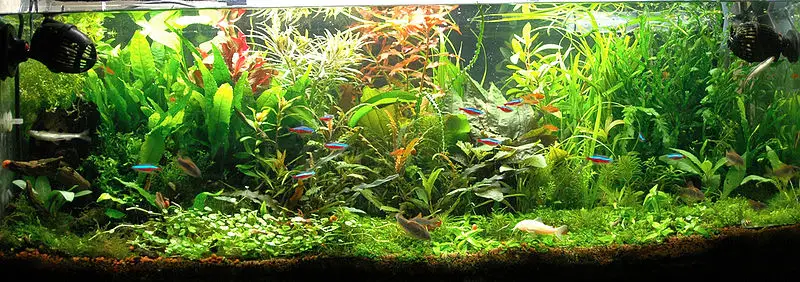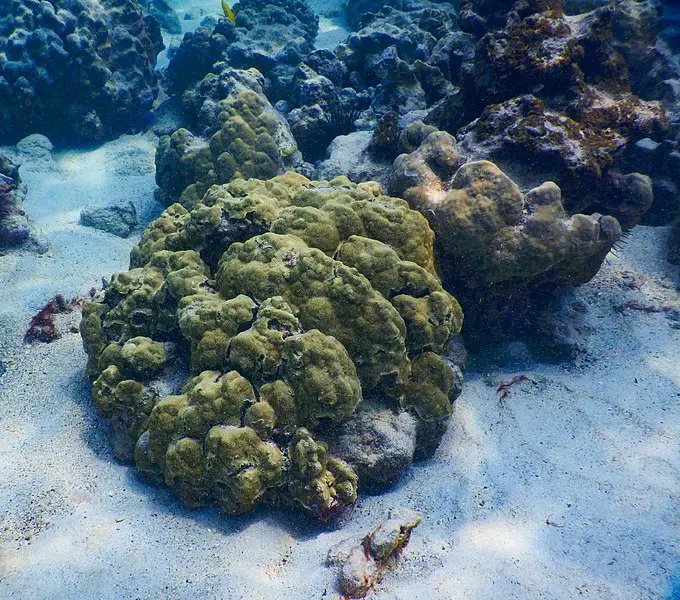Aquarium laterite is an ancient clay that is often added to aquariums to help plants get more nutrients and therefore, maintain the health of the aquarium’s ecosystem. Aquarium laterite attracts nutrients because it is negatively charged and delivers the nutrients to the plants in a digestible form.
If you have heard of the wonderful benefits of aquarium laterite, then you may be looking to find out more. The following guide explains what Laterite is in more depth, when it should be added to a tank and how it will affect the aquarium it is introduced to. Read on for all things aquarium laterite and the like.
What is aquarium laterite?
Aquarium laterite is a very old clay. Because of the aging it has endured, it helps to remove the extra phosphate that can build up in a tank and lead to algal blooms.
Additionally, it helps to get those much-needed nutrients to your aquarium plants in an efficient and palatable way. How does it manage this? Firstly, laterite is negatively charged meaning it will attract plant nutrients and then get those nutrients to the plants.
The nutrients are delivered to the plants through the laterite’s expansive surface area (when compared to gravel). This large area allows the plant root hairs to spread out and more effectively absorb the nutrients being brought to them by the laterite.
As aquarium laterite proves extremely effective in growing various plants within one’s tank, it is often used to introduce exotic plant life into an aquarium ecosystem. Because of its many benefits, laterite helps stimulate growth and nutrient uptake in plants that may otherwise have a difficult time taking root once re-planted.
When should I add iron to my planted tank?
Another beneficial property of laterite is that it is a natural source of iron for your aquarium plants. By adding laterite, you are adding a sufficient amount of iron to your planted tank.
Additionally, because laterite enables easy absorption of nutrients such as iron, your plants will get the benefits of the iron more efficiently than if you were to add iron through alternative methods.
Iron is a very important part of a healthy planted tank’s ecosystem and therefore should be added regularly. Thus, laterite allows for a constant flow of iron to your plants.
You can generally tell if your planted tank requires iron by examining the root tips of the plants in your aquarium. An iron-deficient plant will produce less chlorophyll as it grows thus younger plants will appear less green upon examination and more on the yellow side or even in severe iron deficiencies, white.
If your tank is deeply iron deficient then your plants may not grow properly and may even turn black.
You can use a water test to check the iron concentration in your tank however, we recommend simply monitoring the health of your plants, using aquarium laterite, and/or adding iron through fertilizer somewhat regularly.
Does iron make aquarium plants red?
The belief that iron makes aquarium plants red is largely unfounded. Though a plant’s red pigment will likely contain a certain concentration of iron this is not to say that the more iron you add to your tank, the redder your plants will become.
This is because supplementing iron in a tank does not trigger the production of red pigmentation in the plants. All adding iron to a tank will do is enable pigments to be more easily produced however, this will not necessarily materialize in a red color exclusively.
How do I add iron to my aquarium water?
Aquarium laterite is an easy way to get the iron your plants need into your tank. How you go about adding it largely depends on the form in which you’ve purchased it.
You can either mix it into the gravel already present in your aquarium, you can add it as a new layer on top of the already present gravel or you can simply disperse it randomly if you’ve bought it in such a form. We recommend reading the label on the laterite you’ve purchased to ensure you are adding it to your aquarium using the most effective method.
In addition to aquarium laterite, you may wish to try out some of the handy aquarium fertilizers on the market. These fertilizers often have an extensive array of beneficial micro- and macronutrients and can, therefore, be an excellent way to maintain the health of your aquarium.
Again, most fertilizers can be sprinkled into your tank, but we suggest reading the package to ensure you are using the best method.
Can Rockwool be used in aquariums?
Rockwool can be used in aquariums as it helps to stimulate growth in precarious new plants. How does it do this? Rockwool (also referred to as mineral wool) is a fiber made of stone that can be wrapped around young plant roots to keep key nutrients such as oxygen, bacteria, and water concentrated at the roots when the plant needs them most.
More often than not, Rockwool is used by commercial planters because it helps speed the growing cycle so that planters can sell young plants quicker. However, as it can be introduced easily and also removed simply by hand, it is perfectly suitable for use outside of commercial aquariums.
Final thoughts
Now that you are an expert on aquarium laterite and the important role that nutrients play within an aquarium ecosystem, we suggest beginning by conducting a simple analysis of your tank’s current state.
Ensure you’re looking specifically at the root tips of young plants as they will indicate the health of your tank in terms of nutrient concentration. Take stock of the ages and origins of your plant life and consider using growing aids such as laterite, fertilizers, and Rockwool to stimulate growth and nutrient uptake.
Remember that nutrient-deprived plants will appear less vibrant in color and may even appear somewhat white or black. Look out for these in your tank and rectify the situation with any or all of the suggested aids.


